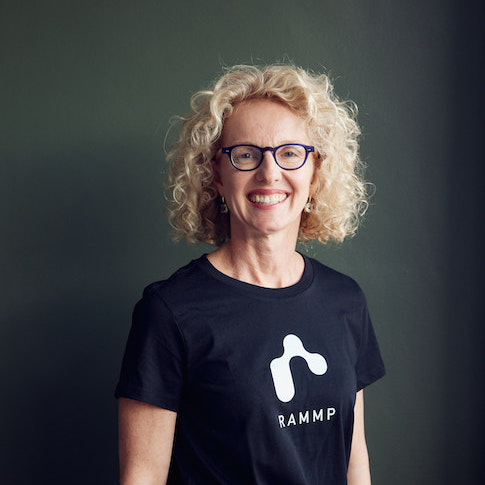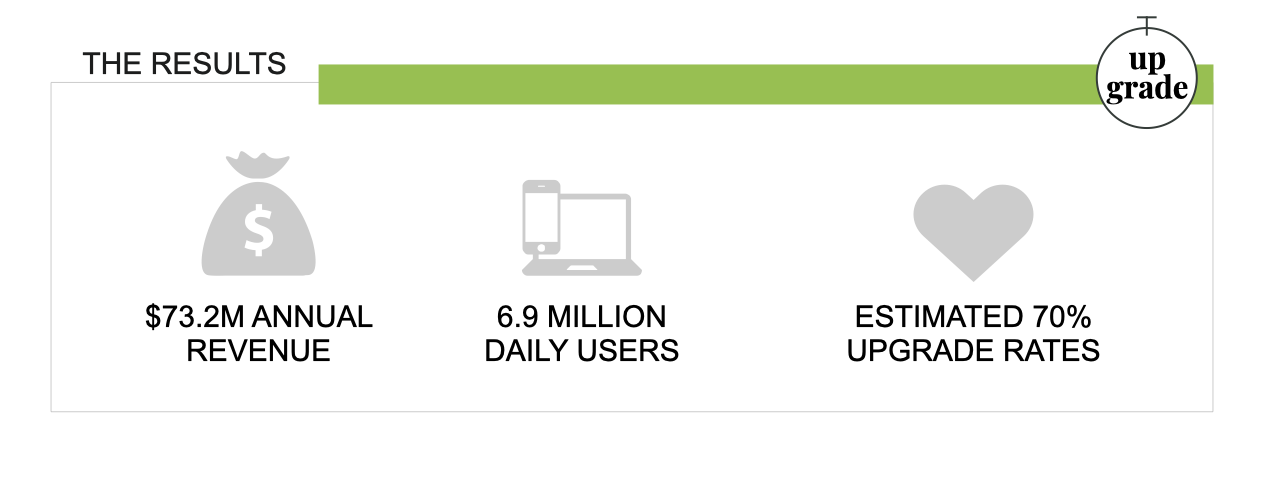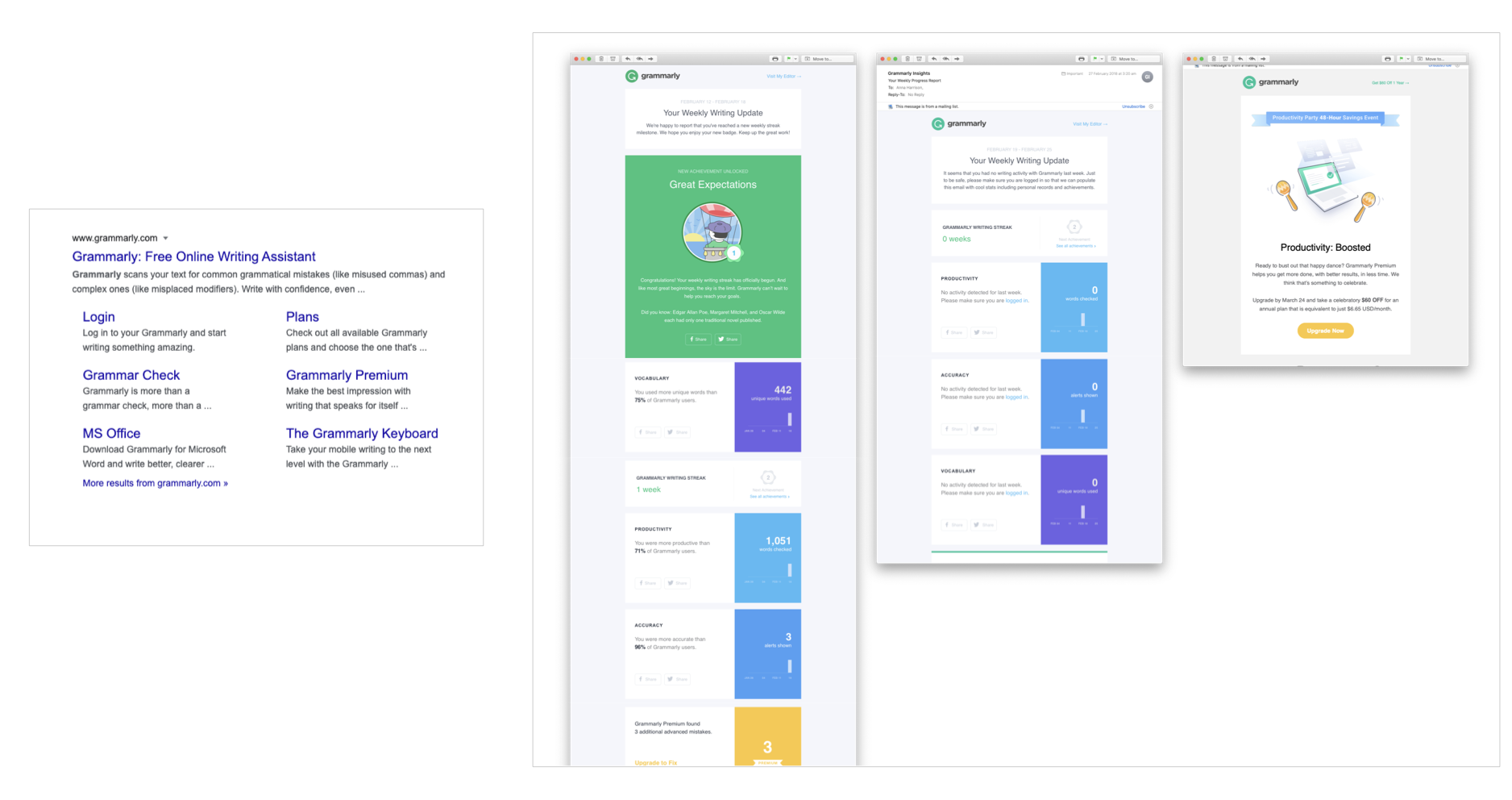2 min read
How Grammarly uses a weekly newsletter as a clever reminder of their value to maintain engagement
 Anna Harrison
Mar 28, 2023
Anna Harrison
Mar 28, 2023

Learn how Grammarly created a unique system for converting their digital relationships from Sign-up to Upgrade and re-buy

The challenge
In this case study, we depart from analysing growing brands and look at a household name that has created a unique system for converting their digital relationships from Sign-up to Upgrade and re-buy. The Grammarly business story is quite interesting, as they started as a paid enterprise offering, and over a decade, grew into a freemium consumer product (“How Grammarly Quietly Grew Its Way to 6.9 Million Daily Users in 9 Years” 2017). Although Grammarly is now a household name, they continue to put tremendous effort into ensuring that they remind their users of their value. Their consistent, personalised and evolving system for doing this is a pivotal component of their incredibly high retention rates.
The approach
Grammarly’s headline in Google is “Grammarly: Free Online Writing Assistant”. They draw you into using their tool through a zero risk, simple installation process of the free version of their product as a browser add-on. Grammarly activates a weekly summary of Grammarly Insights sent to you by email as soon as you sign up. The weekly update provides you with basic stats about how many words you checked, how many mistakes Grammarly corrected for you, and how you compared to other people using Grammarly – they have turned email writing into a competitive sport. Each email is also a subtle reminder of the value you are leaving on the table by not upgrading, in the form of “mistakes that we found, that you can unlock by upgrading”. Their system creates the ultimate FOMO and makes it effortless to upgrade to get the big reveal.

As you use Grammarly, you are introduced to extended useful features in-situ and through their weekly email updates. The feature reveals are relevant to the way you use Grammarly and so are extremely useful. Grammarly has successfully turned their email marketing campaigns into a trusted relationship.
Why it worked
Grammarly’s strategy to convert users into paying customers is one of the best in market. It has helped them double their revenue and active users each year since the business started in 2008. Their approach is worth deconstructing, understanding and applying in your business.
The approach taken by Grammarly works because:
- The resistance to getting started is almost zero. The browser extension is free and easy to install, and you get immediate utility
- The points you are invited to upgrade are connected to the moments you have the highest perceived value from the app. If you use the free version and load in a new 4,000-word document, you’re actively and heavily invested in getting that document checked. That’s the perfect moment to ask the user to upgrade: you have used your free quota, upgrade and never miss another mistake
- The weekly emails from Grammarly reinforce the value that the app is delivering to you each week – the newsletters are personalised with your actual statistic and only contain offers to upgrade at points where you will receive value from the upgrade. In addition, the newsletters are fun! You receive reports that are lightly competitive and encouraging: “You were more accurate than 96% of Grammarly users this week” (I am awesome!); “You were more productive than 71% of Grammarly users this week” (I am winning!); “Grammarly Premium found three additional mistakes that you could have corrected – Upgrade now” (instant FOMO).
Apply it in your business
Grammarly has evolved a perfect balance between utility in their offering and a reminder of their utility – or how they make your life better – through their personalised weekly newsletter delivery. While they set the Gold standard, you can learn from their example and apply it in your own business:
- Map out your end-to-end product usage journey, and mark:
- Rates of engagement at key points
- Perceived value at key points
- Map out your value matrix by aligning your value points with your target audiences’ willingness to pay. Overlay your rates of engagement over the matrix.
- Note whether the points of engagement, points of value, and payment points align, and if they do not, adjust your process.
- Use the ADORE Process to optimise the journey on your website and ensure that your value is supported through regular communications via email, socials or whatever channel your target audience uses to engage with you.
/RAMMP%20Logo%20Purple%20Horizontal%20NEW.svg)